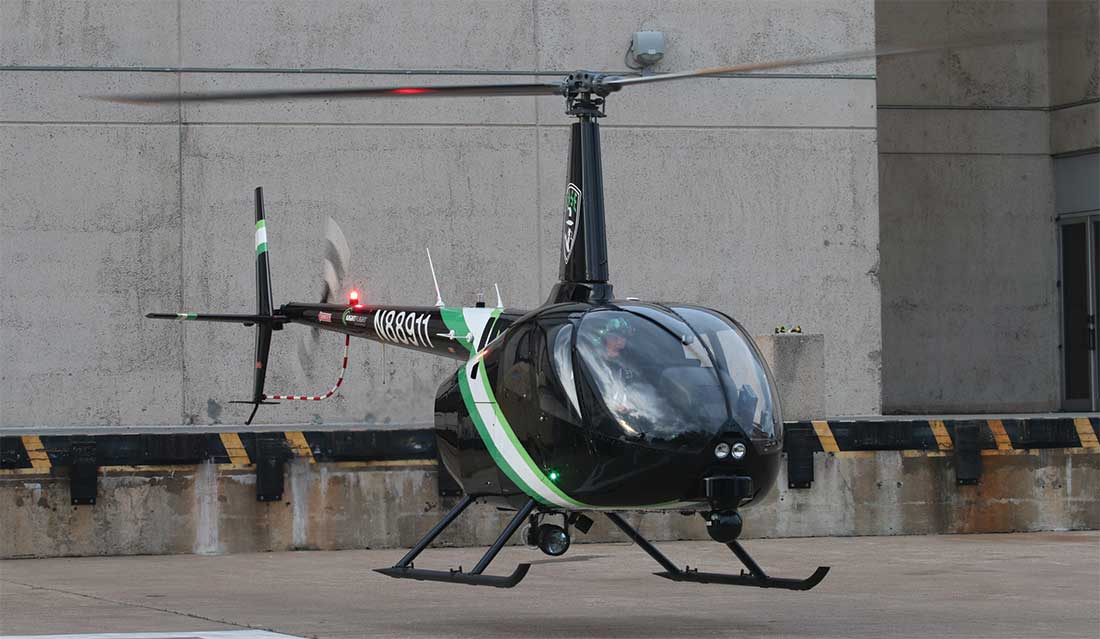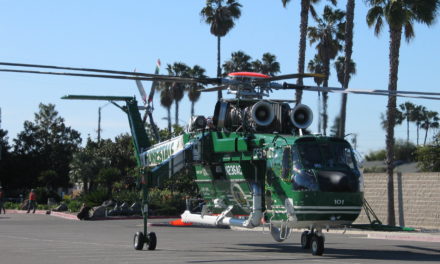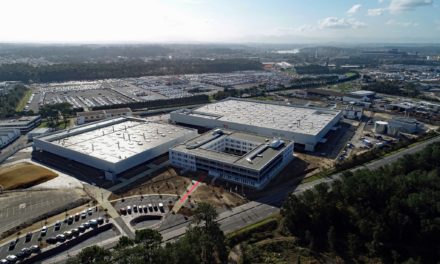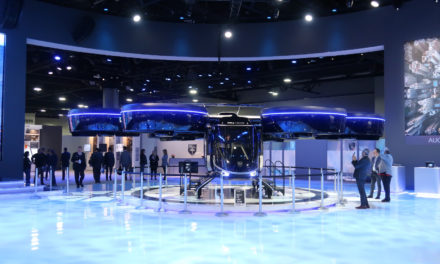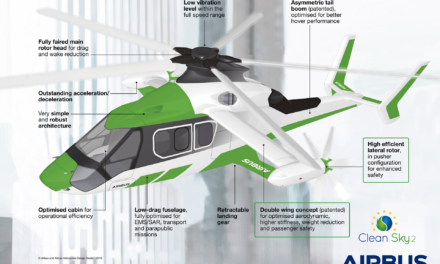By Frédéric Lert
Copyright : Robinson Helicopter
Helicopter Industry had the opportunity to meet with Kurt Robinson during Heli-Expo in Dallas last March, just a few hours before the event’s official opening. The Robinson booth wasn’t completely ready when the company’s CEO arrived for our meeting—a few minutes early, alone and without any bells or whistles. Amid the din of workers putting the finishing touches on the surrounding displays, he answered all our questions without even a hint of doublespeak.
What is your assessment of 2016?
There was good and bad… To start off with the bad, we took a hit—like all helicopter manufacturers—from the economic slowdown. Since we are so involved in training activities, we are part of what I would call the “oil & gas food chain.” In 2016, we delivered 234 aircraft, compared with 347 in 2015: 63 R66 singleengines, 114 R44 Raven IIs, 26 R44 Raven Is, 12 R44 Cadets and 19 R22s. The other difficulty we encountered was the slow certification process. We are still waiting on certification for the R66 Newscopter, which is equipped with an excellent camera with 80x zoom. We currently have about 80 R44 Newscopters in service worldwide, and operators are keen to upgrade to the more powerful optics the R66 can provide. We are also still waiting on FAA approval to market the R66 with a lithium battery, which will result in a 20-pound (9.1-kg) weight savings.
And the good?
On the macroeconomic level, things are taking off again, even though the dollar is still a bit too strong for my taste. Additionally, though our deliveries were low compared with 2015, the average price per helicopter sold actually increased thanks to the options customers chose, such as the Garmin G500H avionics suite and Genesys autopilot. We’ve also made headway in terms of extending our offerings: the R66 equipped with our emergency float system is now certified in Europe. Sales of the R44 Cadet are also good, thanks to certification in a growing number of countries. We are convinced that the Cadet will be a big success thanks to its price and the wide range of possibilities it offers.
Has the drop in sales had a significant impact on your company?
Things are relatively stable, with about 1,100 employees. It varies slightly, but our support & services activity provides a nice business cushion, particularly now that we have more than 12,000 helicopters in service. We can easily transfer employees from production to support if need be.
In Europe we always imagine that, as an American company, you can hire and fire employees depending on sales, as it suits you…
That’s simply not true. We are headquartered in California, which has rather strict employment laws. And we see our workforce as a major asset: we have people who’ve been with us since the beginning, in 1979.
In terms of your whole range of aircraft, do you think the R66 will diminish sales of the R44?
No, because the R66 and R44 are designed for two totally different markets. We developed two models for a good reason.
Are you working on a military version of the R66?
Our policy is the same as it was when Frank was at the helm: we do not develop aircraft specifically for the military. If the helicopter interests the military as is, then that’s great. But we have no interest in designing specific versions because we believe the helicopter already offers optimal performance. Our approach is very much take it or leave it.
Does the R22 have a future? Is there perhaps an upgrade on the horizon?
The modernized version of the R22 is the R44 Cadet. The R22 is limited in terms of weight, so there’s not much to be done. Its remarkable maneuverability, however, means that it’s still ideal for certain missions, like cattle herding and surveillance. We’re working on weight savings, but we’re also enhancing safety with, for example, bladder fuel tanks. We may someday market a version with a lithium battery or very lightweight and inexpensive avionics suite. But when customers ask for air conditioning on board the R22, there’s clearly no way—that’s why we launched the R44 Cadet.
What place does R&D hold at Robinson?
Our research unit is made up of about 25 engineers. It’s a small team, but we want to keep it that way. We could double the number of employees, but we would always be late with projects. It’s not the number of people that’s important, but the quality of the work they produce. The team we have today, headed up by Peter Riedl, meets all our quality criteria. But that doesn’t mean we’re not still on the lookout for new talent…
Where are you with diesel engines?
It’s an idea we’ve been working on for the R44, with about a 250 CV power rating. Diesel boosts performance and allows us to increase maximum altitude by several thousand feet (though without reaching R66 levels) and even decreases fuel consumption by approximately 4 gallons an hour. The Holy Grail would be an engine it could share with a farm tractor! We’ve been working on diesel since 2000, but at the time we couldn’t reach acceptable weights.
What do you think of the Bell 505?
I’m pleased that the Bell 505 is now on the market. It will give us the opportunity to see if it keeps its promises in terms of cost effectiveness and performance. According to the numbers I’ve seen, I think the purchase and operating costs for the 505 will be at least 30% higher than for the R66.
Are you feeling any downward pressure on prices from the launch of the B505?
No. The R66 retails for about $900,000, the B505 for $1.3 million, with “mandatory options”. The R66 consumes 20 gallons an hour, while the Bell is over 30. The helicopters will serve two very different markets.
What do you think of the success of the Guimbal Cabri G2?
It’s a great replacement for the Schweizer. It’s always good to have choices for training craft, but for my part I distinguish between two-bladed helicopters, like the R22, and those equipped with a three-bladed rotor, like the G2. They follow two different logics.
Have you had a chance to fly it?
No, I’ve never had the opportunity. I definitely wouldn’t refuse if I were offered the chance!
Robinson helicopters are 100% made in the USA. Are Trump’s protectionist industrial policies a good thing for you?
Presidents come and go; we’re here to stay. I doubt the new president’s policies will affect us. But one thing is sure: if he asked to come see us, we would be honored. The last president to visit us was George W. Bush—it was a major highlight in Frank’s career.
How is your father?
Frank is at home, in a wheelchair. He is weak, but still asks questions about the business and the market. He’s not really interested in sales figures anymore, but listens attentively when we talk about the technical aspects.

